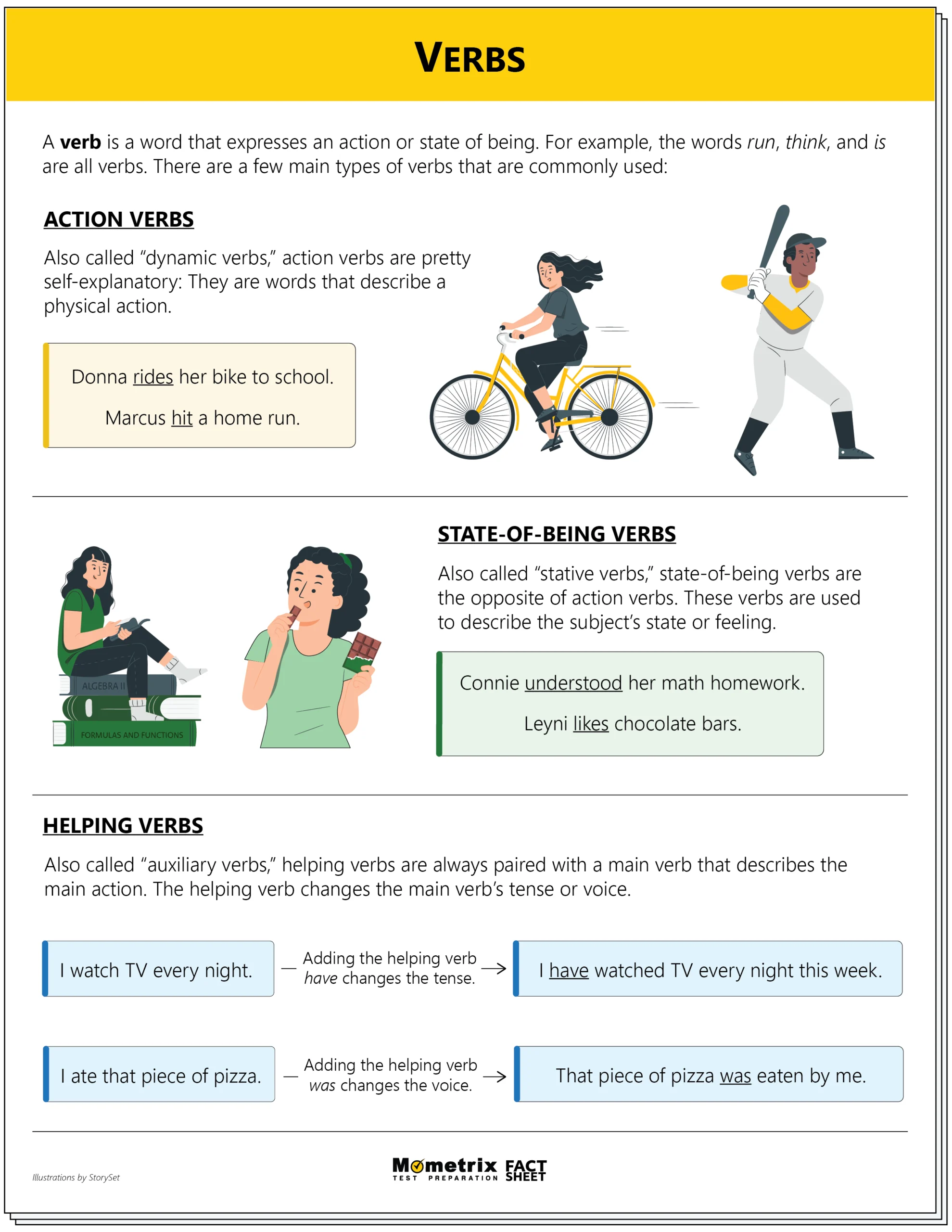
Hey guys! Welcome to this video on action verbs and linking verbs.
So, perhaps you’ve learned what a verb is, but you were unaware that there were different types; or perhaps you’ve heard that there are different types of verbs and you’ve come to see what all the mess is about!
Whatever the case, you’ve come to the right place.
To start, let’s define action and linking verbs.
Action Verbs
Action verbs are pretty straightforward: they tell of an action like sweat, crawl, throw, laugh, and so on.
Linking Verbs
Linking verbs connect or “link” a sentence’s subject to all the other details pertaining to the subject. A linking verb does not describe an action.
Now, there are three main forms of linking verbs. When you see these, it will always be a linking verb:
- The state of being. This includes words like were, was, is, are, am, to be, is being, was being, are being, have been, has been, and had been.
- The state of becoming. This includes words like will become, will have become, to become, become, becomes, has become, became, have become, had become, and so on.
- The state of seeming. This includes words like had seemed, have seemed, has seemed, to seem, seems, seemed, seemed, was seeming, were seeming, is seeming, are seeming, and will seem.
Those were the three forms or types of words that are always linking verbs. The most popular of all the linking verbs that I mentioned above are the linking verbs from point 1, the state of being.
Now, the examples I gave you of action verbs and linking verbs, up to this point, have been pretty straightforward. But as we all know, most things are not THAT simple. There always seems to be that little exception to the rule that creeps in and makes something, that was once so simple, all of a sudden very confusing. Here is that thing: there are verbs that can function both as action and linking verbs.
Verbs Acting as Both
So, in one sentence it may be functioning as a linking verb, and in another that same word may be functioning as an action verb. However, if one of your “linking verbs” has another verb with it then that linking verb is no longer a linking verb.
For example:
In this sentence, is is a linking verb. But, look at this one:
Now, in this sentence, is is not a linking verb, because there is another verb that is describing what the subject is doing; so, is then is a helping verb. Now, a helping verb, which you may have also heard called an auxiliary verb, is exactly what it sounds like. It helps the main verb of a sentence by giving more insight into the portrayal of time.
Another way of saying this is that it helps the main verb form the proper tense.
Anyways, to identify these interchangeable linking or action verb words, I have another clue for you. The easiest way to distinguish a linking verb from an action verb is to insert the word “is” in place of said verb. If the sentence is still understandable, then more than likely you are dealing with a linking verb. Let’s take a look at some examples:
Now, grow is one of those words that can have more than one meaning. It could be talking about a plant growing, or something becoming. In this sentence, grew means “became.” So, the man became angry. Now, remember became is one of our words that is always a linking verb, so we have our answer. We could also check this by plugging in is in place of grew: “The man is angry.” It still makes sense!
Look at this example:
In this sentence, grew is being used as an action verb. Replacing grew with is in this sentence would make the sentence very confusing, and not make any sense, “This summer, Maria is watermelon in her garden.”
The three forms of linking verbs that I gave you are super helpful in identifying which type of verb it is, but remember, if you are still not sure ask yourself, “is this verb telling me what the subject is doing, or is it linking the subject to the rest of the sentence?” If that is still confusing, then trying replacing the verb with “is.”
I hope that this video on action verbs and linking verbs has been helpful to you.
See you guys next time!


